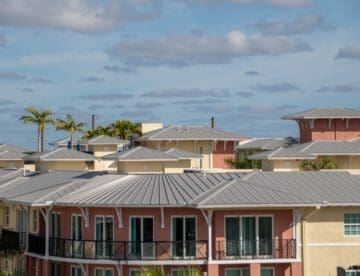Introduction
Researchers may think mold is extraordinary, however whatever is left of us experience serious difficulties loathing it. The stuff becomes all around, from the cheddar in the ice chest to the washroom roof to the very skeleton of the house. Furthermore, yes, it can even develop on your rooftop. The uplifting news is that mildew covered shingles, not at all like old cheddar, don’t should be tossed out. They likely simply require a decent cleaning, trailed by some basic support venture to keep mold (and other life shapes) from returning.
Mold by Any Other Name
A great deal of the dim streaky stuff found on rooftops in wet atmospheres like Seattle is really green growth. You presumably couldn’t care less to know the distinction, and neither does the material business, as most cleaning arrangements and different items for rooftops are focused at mold, buildup, green growth, greenery, ooze… everything works the same. Yet, for the record, green growth generally bolsters on the limestone powder in black-top shingles, while shape frequently blossoms with plant and other natural matter that is fallen onto your rooftop. You can’t do anything to keep green growth and mold spores from flying through the air and arriving on your rooftop, yet you can avoid mold development by keeping the shingles free of natural matter.
Disposing of Mold and Algae
The old standard technique for cleaning green growth and mold stains from black-top shingles is to splash on an answer of chlorine blanch and water. A few people include TSP (trisodium phosphate) for additional cleaning force. You let the arrangement sit for around 5 minutes, or something like that, then you flush it off with a hose. In any case, I’m not prescribing blanch for a couple reasons: It’s poisonous to plants (and most other living things), and it can harm shingles on the off chance that it’s left on too long or isn’t totally washed off. You can shield your plants from dye splash, however then you have the wash water emptying down your canals into your yard, and so on. Not worth the inconvenience.
A superior arrangement is to purchase a business rooftop cleaning item, for example, Spray and Forget. Despite everything you need to splash any encompassing foliage with water prior and then afterward applying the cleaner, yet there’s no flushing required, and large portions of these items offer expanded assurance against future green growth and mold development. The best (and least expensive) approach to apply it is with a greenhouse sprayer from the rooftop, however there additionally are concentrated renditions you can attach to a greenery enclosure hose to apply starting from the earliest stage. One disadvantage of these cleaning arrangements is that, dissimilar to fade, they take a little time to dispose of the recoloring, once in a while a few weeks or months.
Avoiding Future Problems
There are a couple of straightforward approaches to keep mold and green growth from coming back to your recently washed rooftop. The most straightforward is to apply a cleaning or treatment item detailed for long haul insurance against green growth and mold development. There’s likewise the longstanding deterrent measure of introducing zinc or copper strips close to the edge line of the influenced rooftop planes. Both metals contain minerals that normally repress green growth and mold. You basically slip the strips under the shingles, leaving the metal in part uncovered, and nail the strips set up. When it rains, the spillover water steals minerals away of the metal and washes them down the rooftop. (On the off chance that your rooftop has copper blazing around the stack, you may see that there’s practically zero green growth development on the shingles specifically underneath the glimmering.)
As specified before, normal cleaning to expel leaves, twigs and other natural material keeps a rooftop sans mold. At last, for a truly long haul, low-upkeep arrangement, you can determine green growth battling shingles when it’s an ideal opportunity to supplant your old rooftop. These are made with copper-clad granules (mixed in with the customary mineral granules) on black-top shingles. The uncommon granules actually repress green growth development by the same procedure as the zinc and copper strips.




